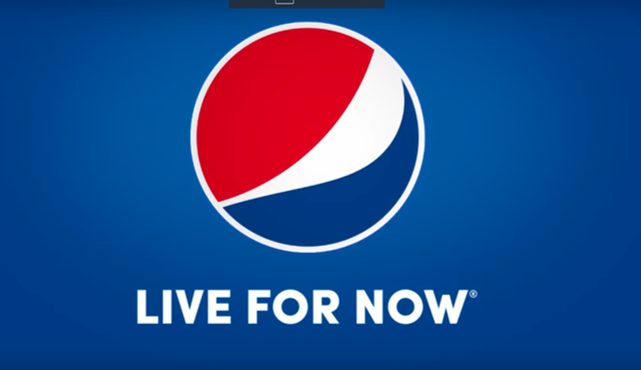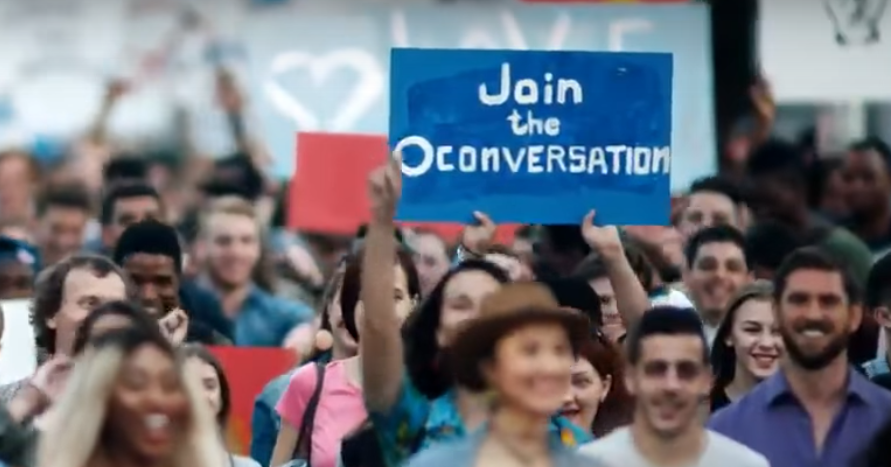A lot has been said about Pepsi’s Kendall Jenner ad, featuring a Black Lives Matter-esque group of demonstrators and some (incidentally) white police officers. It’s pretty clear this ad disturbed a lot of people, and for good reason – it gets a lot of things wrong on a lot of different levels.
And yet – I’m confident Pepsi will ultimately benefit from this fiasco – increasing top-of-mind brand awareness and ultimately leading to a more sales long term than they will lose in the short term.
Why you ask? It’s NOT because “any publicity is good publicity” (just ask United Airlines).
Pepsi’s ad is brilliant because of how our brains work
Daniel Kahnemen explains brilliantly in Thinking Fast, Thinking Slow (a book definitely worth a marketers time), we all have two systems of thought –
System 1 and System 2:
- System 1 is our fast, automatic, frequent, emotional, stereotypic and subconscious mind. Our monkey brain. Our immediate reaction to stimuli, whether it’s recognizing a dangerous sound, or identifying that 2+2 equals 4 without actually having to calculate it.
- System 2 is our slow, effortful, infrequent, logical, calculating and conscious mind. Our human super species brain. Whether it’s our ability to count the number of traffic lights we pass on the way home, or our ability to come together and build damns, bridges and skyscrapers.
How commercials work
It’s all about the dopamine – effective commercials (note that I didn’t say “good”) create little sparks in our brain; These sparks are marked in the brain by dopamine, a neurotransmitter released when we feel pleasure. Importantly, that little chemical also helps our long term memories.
According to Dr. John Medina, dopamine essentially works like a Post-it-Note in our brain that reads “Remember this!”. “Getting one’s brain to put a chemical Post-it-Note on a given piece of information means that information is going to be more robustly processed”.
In other words, being memorable boils down to inducing chemical pleasure. When a commercial successfully produces dopamine for the people watching it, it is not only giving them more enjoyment; it is also assigning to itself more significance, which increases memorability.
So dopamine works like a drug; a “fix” if you will, designed to appeal and attract us to experience a product or service ourselves. As such, most commercials are designed to trigger our System 1.
So what about Pepsi?
Here’s the ad, just in case you haven’t seen it:
Pepsi have since pulled the ad, issuing the following apology:
Pepsi was trying to project a global message of unity, peace and understanding. Clearly we missed the mark, and we apologize. We did not intend to make light of any serious issue. We are removing the content and halting any further rollout. We also apologize for putting Kendall Jenner in this position.
This was by all means, a clusterfuck.
I’ll spare the shot-by-shot analysis of what everything this video does wrong. Eric Thomas does an excellent job of that, calling this “the Philosopher’s Stone of crap media”. Where Eric and I disagree is about the long term affect of this ad;
- He describes this is as an example of a company losing it’s grasp on millennials
- I see a mega-corporation that simply got so caught up in it’s own anus that it forgot how it actually smells
One extreme example – The mob of beautiful people gets together and demonstrates for a harmonious (albeit vague) future where everyone gets along. Beautiful, right?
And yet how does it end? with a hedonistic “live for now”:

It might as well say “fuck tomorrow”.
I write these words it has 9.5 million views, 30K thumbs up, and get this – 150K thumbs down. Compare these numbers to Coca Cola’s latest ad and we’re talking ~300% more views and a ~300% higher engagement rate.
This mean a lot of people had a lot of opinions about this ad and Pepsi made sure to add even more fuel to the fire, by asking us to:

Join the conversation – a quasi-subliminal message that is asking us to engage. And although it seemingly has backfired on Pepsi, we’re doing exactly what they asked us to do…
So why is this good for Pepsi?
This ad uses a simple formula, used countless times by advertisers: show beautiful people connecting over your product.
I would argue it’s as lazy an approach as writing a song using the infamous C, G, Am, F chords. It’s lazy, but it works: We all want to connect to other people, we all want to feel beautiful.
A few examples of why this ad triggered such an emotional response from people:
- The Black Lives Matter take is flat out ignorant and insensitive.
- Something about it feels like a culmination of the (American) corporate brain-washing culture (a culture which I started my career in) It’s indicative of the materialistic narratives that are set upon us by the people who are judged (and judge) by whether or not they are making lots of money.
- It points to a vulnerability that is inside us all – while our System 2 hates this video because it’s manipulation is so transparent it makes our rational mind angry, our System 1 is still seeing beautiful people, enjoying a sugary beverage and making love, not war. Our awareness of this dissonance disturbs us because we’re afraid we’ll fall for it. And the truth is, we do fall for it. We can’t unsee these images any more than we can unsee a flatulent cat meme (I’m talking to you Nyan Cat). Because the ad triggered an emotion of any sort, the narrative will be imprinted in our monkey minds to some extent, forever.
Pepsi’s brand equity
Every brand holds a certain equity in our mind. An unmeasurable quantity that represents that emotional response triggered by our interaction with a brand.
Pepsi’s brand equity takes a hit in our brain’s System 2. It’s absurdity and laziness bothers our logical minds, but in time our logical minds shift to other things.
In our primitive minds however, an alternate reality that conveys who we’re supposed to be. And like it or not, if you watch an image over and over-beautiful people drinking Pepsi and making love over and over.. System 1 will eventually associate drinking sugary beverages to being beautiful. It’s simply how our brains work.
So while right now both our both our logical and primitive brains might have taken a hit, System 2 will forget, while in System 1 a seed is planted; a little associated-by-dopamine spore that will sprout and grow taller every time we interact with Pepsi.
Brilliantly absurd publicity
Look no further than Donald Trump’s election campaign to understand that absurdity IS NOT an emotion that prevents us from buying. Fake news works the same way – it embeds itself to our brains in an irreversible way.
Research shows that when people are given wrong information, even after being told that information was wrong, it’s the preliminary feeling that it was true that is more likely to prevail.
And the media? They’re loving it – in today’s impression economy where everyone is competing for consumers attention, this is just another thing to talk about. Oh, and there’s this:
Needless to say between the news outlets and the news parody outlets (Colbert, John Oliver, SNL…) the amount of media attention this received was worth millions and millions of dollars.
In conclusion – People will still buy Pepsi
Disasters happen. Pepsi lost it’s way, admitted it’s mistake, took it down and apologized. I would guess some marketers are in the hot seat for this circus, but others will come and they will make the same mistakes.
But people will still buy Pepsi. Restaurants will still serve it. Investors will buy it’s stock. People who prefer Pepsi will still drink Pepsi because they prefer Pepsi. People who like Cola will drink it because they like Cola.
You may be annoyed right now but don’t worry – you will eventually forget the narrative, but remember the image.
And so will everyone else.
Be First to Comment